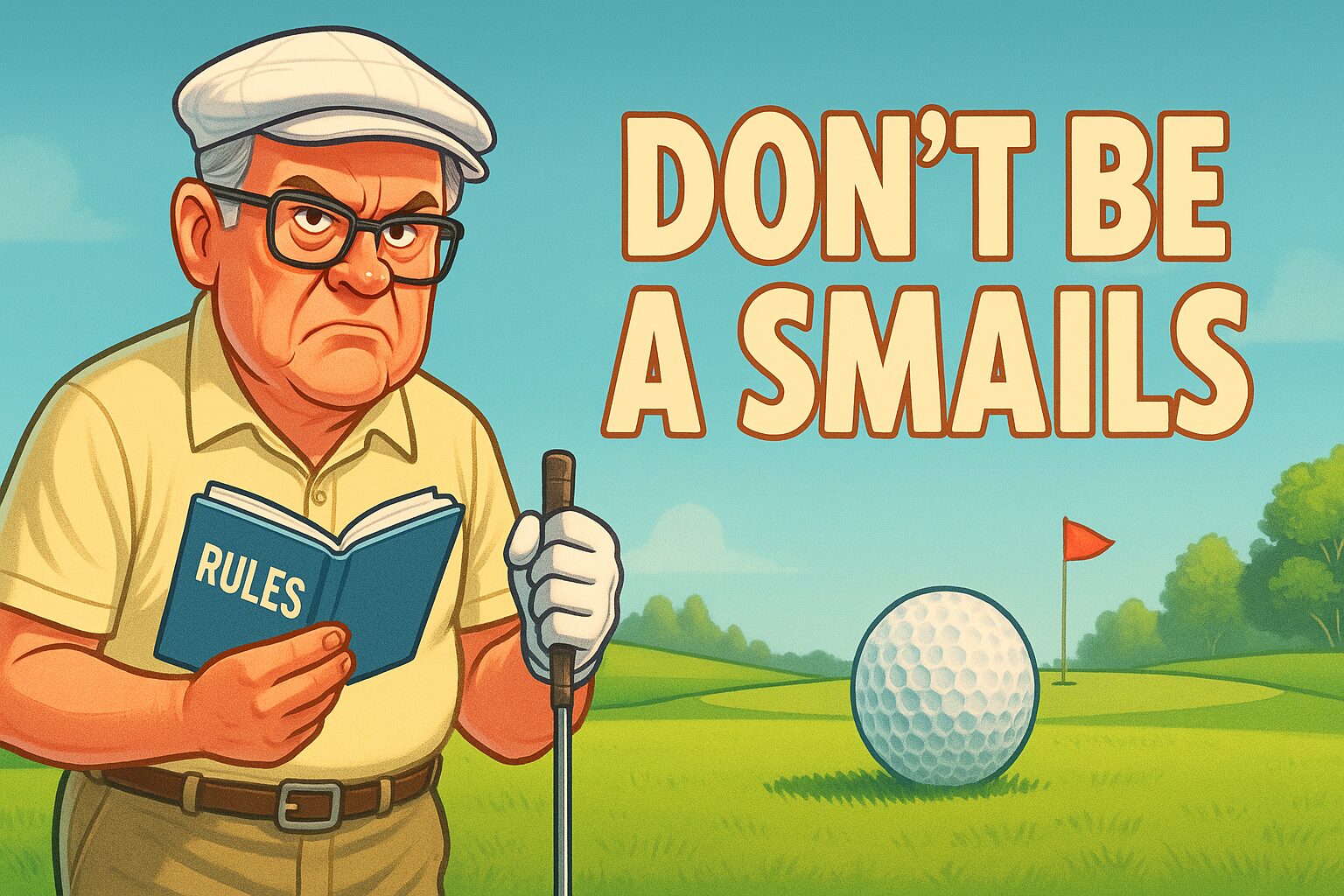Blog
How to Bet on Golf
A Comprehensive Guide for Beginners and Enthusiasts

Golf betting has grown in popularity, driven by the excitement of major tournaments and the wide range of betting opportunities available. Unlike betting on traditional team sports, betting on golf offers unique formats and options due to its individual competition nature. Here’s a guide on how to get started, understand the odds, and explore different betting markets.
Understanding Golf Odds
Golf betting odds can be presented in three main formats: American odds, decimal odds, and fractional odds. American odds are most common in the U.S., where favorites are represented with a minus sign (e.g., -150), and underdogs have a plus sign (e.g., +200). A bet with -150 means you need to wager $150 to win $100, while +200 means a $100 wager would win you $200.
Decimal odds are used in Europe and represent the total return for every $1 wagered, including your stake. For example, 3.00 odds mean a $1 bet would return $3. Fractional odds, used primarily in the UK, such as 10/1, show how much profit you’d make compared to your stake (e.g., a $10 bet at 10/1 returns $100 in profit, plus the original $10 stake).
Popular Golf Betting Markets
- Outright Winner: This is the most straightforward bet—picking the player who will win the tournament. Given that there can be up to 156 players competing, the odds are often higher compared to team sports. This market remains open even after the tournament has begun, but odds will shift based on player performance.
- Place Finish: Instead of betting on the outright winner, you can bet on whether a player will finish in the top 5, top 10, top 20, etc. This gives bettors a better chance of cashing out, albeit with shorter odds. For instance, betting on Rory McIlroy to finish in the top 10 will have lower odds (and thus a smaller payout) than betting on him to win the entire tournament.
- Matchups: In matchup betting, you’re betting on one player to finish ahead of another in the tournament. Matchups can span the entire tournament or be restricted to a specific round. This format can simplify golf betting by narrowing down your focus to just two players, rather than the entire field.
- Round Leader: You can bet on who will lead at the end of a particular round, such as the first round leader. These bets typically have high odds since early-round performance can be unpredictable.
- Prop Bets: Golf props add extra excitement to your betting experience. Examples include whether there will be a hole-in-one, who will record the longest drive, or specific player props like whether a certain golfer will make the cut. These prop bets don’t directly affect the tournament outcome but can offer interesting side action.
- Nationality Props: This market allows you to bet on the highest-finishing player from a specific country or region. For instance, you might bet on the top American or the best Australian player in a tournament.
- Live Betting: Live betting in golf is a growing trend, allowing bettors to place wagers in real time during the tournament. You could bet on whether a player will make a birdie on a specific hole or if they’ll hit the fairway. This type of betting adds to the thrill by enabling you to react to the action as it unfolds.
Key Tips for Betting on Golf
- Study Course Layout and Conditions: Different courses suit different player styles. Research the course layout, whether it’s favorable to long hitters or requires accurate iron play. The weather can also significantly impact outcomes—windy conditions often mean higher scores.
- Know the Players: Recent form is crucial in golf. Has the player been consistent in recent tournaments? Do they have a history of performing well on similar courses? Understanding these details will give you an edge when placing bets.
- Manage Your Bankroll: Always set a betting budget that you can afford to lose. A good rule is to bet only 1-4% of your bankroll on any given wager. It’s easy to get caught up in the excitement, especially during major tournaments, but staying disciplined is key to long-term success.
- Take Advantage of Dead Heat Rules: If multiple players tie for a finishing position (e.g., several players tying for 5th place), the payout is divided among the winners. Understanding how your sportsbook handles dead heats can help you manage expectations and understand potential returns better.
- Look for Value: Assess implied odds to determine whether a wager is worth it. Implied odds show the probability of an outcome as determined by the bookmaker, but your own research might suggest a different probability—this is where you find value. For example, if you believe a player has a better chance of winning than the odds suggest, this could be a good bet to make.
Common Golf Betting Strategies
- Each-Way Betting: This involves placing two bets—one on a player to win and one on them to finish in the top spots (usually top 5 or 10). It’s a good strategy when you think a player has a strong chance of competing but might not win outright.
- Focus on Underdogs in Matchups: In matchups, sometimes less prominent players are undervalued. If a high-profile golfer is struggling with form, betting on an underdog with better recent performances can be lucrative.
- Weather Watching: Keep an eye on the forecast, as bad weather can significantly affect play. Players with experience in tough conditions could be a good bet in such scenarios.
Responsible Betting in Golf
Betting on golf is meant to enhance the excitement of the sport, but it’s important to wager responsibly. Never bet more than you can afford to lose, and avoid increasing your bet sizes during big tournaments, even if the excitement is high. Set limits for yourself and always keep the focus on having fun, rather than chasing losses.
Blog
The Unofficial Rules of Golf: A Gentleman’s Guide to Not Being Judge Smails
The official rulebook is thicker than a dictionary and twice as boring. Let’s talk about the rules that really matter on the course: how to have fun, respect the game, and not be a stick-in-the-mud. Hint: It involves less plaid and more cosmic harmony.

You’ve seen him. I’ve seen him. The guy who quotes the USGA rulebook like it’s scripture. He’ll happily tell you your ball moved a quarter of an inch when you addressed it, costing you a penalty stroke. He’s got a plumb bob for a three-foot putt and the personality of a rake. He is, in spirit, Judge Smails. And let’s be honest, nobody wants to be Judge Smails.
The real game of golf, the one that keeps us coming back, isn’t played by those rules. It’s played by a higher law. An unwritten code of conduct that’s all about flow, friendship, and the pursuit of that one perfect shot. It’s a gentleman’s agreement with the universe.
So, let’s talk about the rules that actually matter.
1. The Cosmic Readjustment (aka The Mulligan). Your first tee shot is a mess. It goes sideways into the woods where the gophers play. The Smails of the world would tell you to take a penalty and hack it out. I say the universe is just getting warmed up. The “breakfast ball” isn’t cheating; it’s a course correction. It’s an agreement among friends that a round of golf shouldn’t be ruined before it even begins. Take another. The Dalai Lama would want you to.
2. The Art of Flow (aka Pace of Play). This isn’t about rushing. Rushing is a fool’s game. This is about flow. It’s about being ready to hit when it’s your turn. It’s about watching your friend’s shot so you can help them find it. It’s about moving with a purpose, not like you’re searching for your car keys in a dark parking lot. Don’t be the anchor that drags the whole group down. See the line, hit the ball, walk on. Nanananana.
3. The Circle of Friendship (aka Gimmes). Is the putt inside the leather? Good enough. Pick it up. Life is too short to watch your buddies sweat over an 18-inch putt for a double bogey. A gimme isn’t just a time-saver; it’s a gesture of goodwill. It says, “I trust you, you trust me, and neither of us needs the anxiety of missing this tiny putt.” It’s good for the karma, and even better for the pace of play.
4. The Final Verdict (aka The 19th Hole). The most important rule is this: no matter what happened out there, you shake hands on the 18th green and settle things over a cold drink at the 19th. The guy who shot an 82 and the guy who shot a 102 are equals in the clubhouse. The stories get better, the putts get longer, and the bad shots fade away. This is where the real game is won.
So, forget about the fine print. Focus on the feeling. Be a good playing partner, enjoy the walk, and don’t be a Smails. You’ll find your score starts to take care of itself.
Did this speak to your soul? Pass it along to your foursome to make sure everyone is on the same page. For more deep thoughts from the fairway, be sure to follow us on social media. It’s the right thing to do.
Blog
When Golf Gadgets Fail: Navigating Common Tech Mishaps on the Golf Course
A Look at What Happens When Modern Golf Gadgets Go Wrong

Imagine this: you’re on the golf course, teeing off on a beautiful, sunny day. With the help of your trusty golf gadget, you’re confident you’ll hit a birdie or even an eagle. But just when you’re about to swing, your gadget malfunctions. Suddenly, your perfect game is thrown into chaos. Welcome to the world of technology fails, where even the most advanced golf devices can sometimes let you down. In this article, we’ll explore some common tech fails and provide some tips on how to handle them.
When Golf Gadgets Let You Down
Modern golf devices, from smart clubs to digital scorecards to GPS-enabled watches, have revolutionized the game. They provide golfers with real-time data, helping them refine their swing, choose the right club, and navigate the course. But what happens when these devices fail?
Unreliable Data
One of the most common golf gadget fails is inaccurate or unreliable data. GPS devices might show the wrong distance to the pin, swing analyzers might give incorrect feedback, and digital scorecards might miscalculate your score. This can be frustrating, especially when you’re relying on these devices to improve your game.
Battery Drain
Another common issue is battery drain. Many golf gadgets require a significant amount of power, and if they’re not properly charged, they can die in the middle of a game. This leaves you without the data you need to make informed decisions on the course.
Technical Glitches and Malfunctions
Sometimes, golf devices just stop working. They might freeze, crash, or refuse to turn on. These technical glitches can be caused by software bugs, hardware issues, or even user error.
Preventing Golf Gadget Fails
While it’s impossible to prevent all golf gadget fails, there are steps you can take to minimize the risk.
Regular Updates
Keeping your devices updated can help prevent software-related issues. Regular updates often include bug fixes and improvements that can enhance the performance of your device.
Proper Charging
To avoid battery-related problems, make sure to fully charge your devices before hitting the course. Some devices also have power-saving modes that can help extend battery life.
Backup Plan
It’s always a good idea to have a backup plan in case your devices fail. This might mean carrying a traditional scorecard or having a basic understanding of how to calculate distances without a GPS.
When Gadgets Go Wrong: The Bottom Line
Golf gadgets are a fantastic tool for any golfer looking to improve their game. However, like all technology, they can sometimes fail. By understanding the common issues and how to prevent them, you can ensure you’re prepared for any tech-related hiccups on the course. After all, golf is about more than just the gadgets—it’s about the experience, the skill, and the love of the game.
Blog
Mastering the Art of Overcoming Choking under Pressure: Strategies for Peak Performance
Learn the skills needed to stay calm under pressure.

Imagine this: you’ve spent countless hours honing your skills, preparing for that big presentation, important meeting, or decisive sports match. But, when the big moment arrives, instead of performing at your best, your mind goes blank, your hands shake, and you flub it. The dreaded phenomenon of ‘choking under pressure’ can strike anyone, from the seasoned professional to the eager amateur. So, how do you overcome this common mental roadblock? In this article, we’ll explore effective strategies to help you conquer the fear of choking and elevate your performance under pressure.
Understanding Choking under Pressure
Before you can overcome choking, it’s crucial to understand what it is. Psychologists define choking as performing below your ability under pressure. This can be due to heightened anxiety, overthinking, or fear of failure. The irony is, the more you care about performing well, the more likely you are to choke.
Why Do We Choke?
Several factors contribute to choking under pressure. Here are a few:
-
- Fear of Negative Evaluation: The fear of being judged negatively by others can cause significant anxiety, leading to poor performance.
- High Stakes: When the stakes are high, and the outcome is important, the pressure can cause you to underperform.
- Overthinking: The tendency to scrutinize every detail in high-pressure situations can divert your focus from the task at hand.
Strategies to Overcome Choking
Now that we understand why we choke, let’s delve into strategies to prevent it:
- Practice Under Pressure: Simulate high-pressure situations during practice to acclimate yourself to the stress.
- Focus on the Process, Not the Outcome: Concentrating on the process helps keep your mind focused and prevents overthinking.
- Use Positive Affirmations: Positive self-talk can boost your confidence and reduce anxiety.
Case Studies: Athletes Overcoming Choking
Many successful athletes have overcome choking to deliver exceptional performances. Take Michael Jordan, for example. He often missed crucial shots early in his career but used these failures to fuel his determination and eventually became renowned for his clutch performances. Similarly, Serena Williams has bounced back from choking in several matches to claim victory, demonstrating her mental toughness.
Choking under pressure is a common phenomenon, but with the right strategies, it can be overcome. By understanding the causes of choking and implementing techniques like practicing under pressure, focusing on the process, and using positive affirmations, you can learn to perform at your best when it counts the most. Remember, it’s not about never feeling pressure; it’s about learning how to thrive within it.
As Michael Jordan said, “I’ve missed more than 9,000 shots in my career. I’ve lost almost 300 games. 26 times, I’ve been trusted to take the game-winning shot and missed. I’ve failed over and over and over again in my life. And that is why I succeed.” So, next time you face a high-pressure situation, think of it as an opportunity to grow, not a threat to be feared.
If you’ve enjoyed this article and want to learn more about mastering your mental game, subscribe to our newsletter for more tips and strategies. Or, if you’re ready to take your mental toughness to the next level, check out our other articles designed to help you conquer pressure and perform at your peak.
-

 Product Review6 years ago
Product Review6 years agoThe Perfect Practice Putting Mat Review by Jason Tenzer
-

 Blog4 years ago
Blog4 years agoLoophole Rule Offers PGA Tour Pros a Mulligan
-

 Blog4 years ago
Blog4 years ago2021 Buyer’s Guide: The Top 10 Value Golf Balls For Distance & Feel
-

 Blog5 years ago
Blog5 years agoGolf Marriage Counselor
-

 Product Review6 years ago
Product Review6 years agoTHE ADJUSTABLE IRONS: WALKING STICKS GOLF CLUBS
-

 Blog6 years ago
Blog6 years ago9 Biggest Chokes Of The Past Decade
-

 Blog4 years ago
Blog4 years agoWhat Your Golf Clubs Say About You
-

 Equipment6 years ago
Equipment6 years agoOHK Sports Interview by Jason Tenzer




























